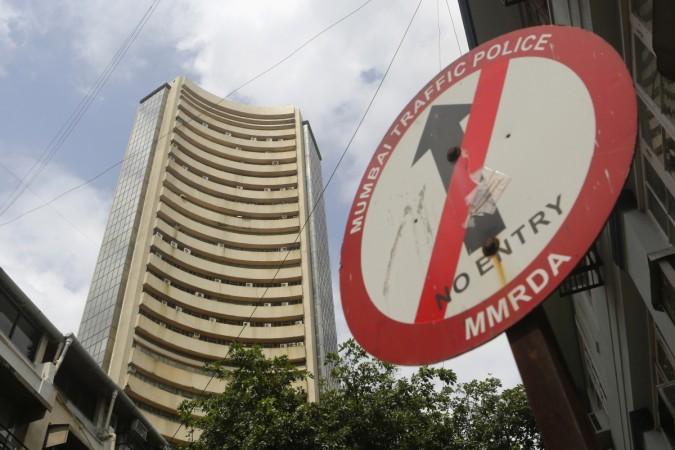
Traders are apprehensive of a breather in the market in the week ahead after its sharp upward correction following the sell-off frenzy in September and October.
The week will be one day short with the Guru Nanak Jayanti holiday on Friday, effectively dampening traders' risk appetite because of the long weekend ahead. Domestic issues like the central bank board of governors meeting on Monday and the assembly election in Chhattisgarh could influence the situation. International factors like the oil price uncertainty and Brexit stalemate could also cast a shadow on Indian indexes.
Some analysts believe there could be some volatility, especially in the earlier part of the week, as the stocks lose their swing back steam after two weeks of gains.
Last week saw both primary indexes, Sensex and Nifty, gaining around 1 percent defying international crude uncertainty following news of Opec production cut back that could nudge up the prices.
The Indian rupee's marginal appreciation against the US dollar and the decline in bond yields were events of trader interest last week, but the week ahead could be different.
The tension in US-Saudi Arabia relations over the US Central Intelligence Agency's (CIA) finding implicating Saudi crown prince Mohammed bin Salman in the murder of journalist and Washington Post columnist Jamal Khashoggi could cloud traders' risk appetite.
Crucial hurdles
Though the indexes are headed north, there could be crucial hurdles that could derail the rally for at least in the short term, Foram Parekh, an Indiabulls analyst told MoneyControl.
The federal elections likely around May next year will continue to weigh on the market until then, Parekh said.
The market will keenly watch the second phase of the assembly elections in Chhattisgarh state on November 20, the movement of the rupee against the dollar and crude prices, Rahul Sharma, Senior Research Analyst at Equity99, was quoted by MoneyControl as saying.
The Reserve Bank of India (RBI) board meeting on Monday is likely to see some fireworks, especially after the government nominee on the board made clear the view that the government is not happy with the way the RBI is approaching banks' non-performing assets provisioning. The Dalal Street will be watching closely governor Urjit Patel's response to the government stance made clear by S. Gurumurthy a couple of days back. The street would be interested in how much Patel would yield as much as if he would at all yield ground on key issues.
The government is keen on easing the lending norms to the MSME (micro, small and medium enterprises) sector, relaxing the Prompt Corrective Action framework for weak banks and laying down new guidelines for the size of the reserve the central bank should maintain.
Steep decline
Brent crude's nearly 5 percent fall to $66.76 a barrel last week is expected to continue, despite the Opec decision to enforce a production cut. The exemption that the US has granted to eight countries to continue to Iran oil imports despite the sanction is acting as a stabilising factor.
The recent steep decline in crude oil prices is also a big positive for India's macroeconomic position assuming oil prices stay at current levels, experts said.
"India's macroeconomic position appears to have stabilised with crude prices slipping to below $70 a barrel. We will see stable Indian rupee and interest rates and a manageable fiscal position over the next few months if crude oil prices were to remain below $75 per barrel," Kotak Institutional Equities said.
Experts reckon the technical position of the markets to be strong after an attack of the bulls from previous week's low. The benchmark index's closing near the high after a decisive break out of the tight 10,450-10,650 range indicated strong bull force.
F&O positions
Nifty's near-term hurdle is believed to be 10,650, after which the upside is likely to continue, In case Nifty beats its 200-day EMA, placed around 10,700, the rally may pick up further strength.
The F&O market shows maximum call open interest of 34.07 lakh contracts set at the 10,800 strike price, which is considered a resistance level for the November series, followed by the 11,000 and 10,700 strikes, according to market watchers.
Maximum put open interest of 35.88 lakh contracts was seen at the 10,200 strike price, which is seen as a support level for the November series, followed by the 10,500 and 10,400 strikes.









!['Had denied Housefull franchise as they wanted me to wear a bikini': Tia Bajpai on turning down bold scripts [Exclusive]](https://data1.ibtimes.co.in/en/full/806605/had-denied-housefull-franchise-they-wanted-me-wear-bikini-tia-bajpai-turning-down-bold.png?w=220&h=138)



